- News
- Reviews
- Bikes
- Components
- Bar tape & grips
- Bottom brackets
- Brake & gear cables
- Brake & STI levers
- Brake pads & spares
- Brakes
- Cassettes & freewheels
- Chains
- Chainsets & chainrings
- Derailleurs - front
- Derailleurs - rear
- Forks
- Gear levers & shifters
- Groupsets
- Handlebars & extensions
- Headsets
- Hubs
- Inner tubes
- Pedals
- Quick releases & skewers
- Saddles
- Seatposts
- Stems
- Wheels
- Tyres
- Tubeless valves
- Accessories
- Accessories - misc
- Computer mounts
- Bags
- Bar ends
- Bike bags & cases
- Bottle cages
- Bottles
- Cameras
- Car racks
- Child seats
- Computers
- Glasses
- GPS units
- Helmets
- Lights - front
- Lights - rear
- Lights - sets
- Locks
- Mirrors
- Mudguards
- Racks
- Pumps & CO2 inflators
- Puncture kits
- Reflectives
- Smart watches
- Stands and racks
- Trailers
- Clothing
- Health, fitness and nutrition
- Tools and workshop
- Miscellaneous
- Buyers Guides
- Features
- Forum
- Recommends
- Podcast
review
£799.99
VERDICT:
Works a charm on smoother gravel roads but has it limitations – namely its looks, price and weight
Weight:
1,000g
Contact:
At road.cc every product is thoroughly tested for as long as it takes to get a proper insight into how well it works. Our reviewers are experienced cyclists that we trust to be objective. While we strive to ensure that opinions expressed are backed up by facts, reviews are by their nature an informed opinion, not a definitive verdict. We don't intentionally try to break anything (except locks) but we do try to look for weak points in any design. The overall score is not just an average of the other scores: it reflects both a product's function and value – with value determined by how a product compares with items of similar spec, quality, and price.
What the road.cc scores meanGood scores are more common than bad, because fortunately good products are more common than bad.
- Exceptional
- Excellent
- Very Good
- Good
- Quite good
- Average
- Not so good
- Poor
- Bad
- Appalling
It's one of the most unusual looking products ever to pass through the road.cc office, but get past its radical appearance and the Lauf Grit fork offers some useful bump-absorbing benefits for off-road gravel riding. There are limitations to the design, though, and it's not cheap.
Lauf is an Icelandic company and came up with its novel fork design a couple of years ago, first for the mountain bike market and more recently adapted for gravel and cyclo-cross bikes. With the rapid growth of gravel and adventure riding in the past 12 months or so the Lauf has been popping up on more and more forum conversations about bike setups.
> Find your nearest dealer here
The fork comprises a full carbon fibre construction from the bottom to the steerer tube, with a separate carbon section housing the dropouts, and 12 short glass fibre plates joining the two halves. The brake hose is routed externally with a few zip tie anchor points and a steerer tube bung and axle is supplied in the box.
Those glass fibre plates essentially act like a leaf spring and allow the front wheel to move up and down to the tune of 30mm. It's not a lot, but the idea is that it's enough to take the edge off harsher bumps and impacts without drastically altering the geometry of the bike by raising the front end too much. The axle-to-crown measurement is 409mm with Lauf factoring in about 6mm of sag when the bike is weighted.
I tested the 15mm version but a 12mm version is also available, and with the latter rapidly becoming standard on all new road and adventure bikes, all bases are covered. You can't switch one from the other, but most good hubs can be adapted for either axle diameter with replaceable end caps.
There's clearance for up to 42mm tyres on a 700C rim or 2.1in tyres on 650B wheels. The flat-mount disc mount supports 160mm rotors but I had to use an adapter to fit my post-mount SRAM Rival brake callipers.
It does add weight compared with a regular rigid fork. It's 1kg with an uncut steerer tube, versus about 375g for the fork it replaced on the Open UP I used as the test bed. Unless you're a weight weenie that sort of difference isn't going to be a major issue and you do have to factor in the benefits that the 30mm suspension is going to bring when tackling rough terrain versus the small weight penalty.
But 'I've already got fat tyres, that's enough suspension surely?', you might be wondering. Lauf makes the claim that when measured on a 50psi 38mm tyre, the Grit gets you roughly twice the suspension travel, so if the tyre provides 6mm of deformation, the fork gives an extra 12mm. It's more bump absorbing for you, basically.
I fitted the Lauf to the Open UP I tested for a couple of months, with the review period culminating in the Dirty Reiver 200km gravel event, a suitable test for the fork. Before that, I rode the fork everywhere, from road rides to mountain bike trails and everything in between, including plenty of local bridleways and the gravel roads of Salisbury Plain. My first observation was that it doesn't make any real discernible difference to the fit and geometry of the bike, and the handling is unchanged.
The good...
It creates a smoother ride. It works really well on smaller bumps and ripples, filtering out the vibration very noticeably compared with the rigid fork it replaced.
There's less vibration through the handlebar, and that's a good thing on longer rides. It was a real benefit on the near-200km of gravel roads that make up the Dirty Reiver.
Handling at speed and tackling fast descents is an area where the Lauf shines. It provides extra traction on fast fire road descents with a washboard surface that would see a regular rigid fork skipping about wildly. With the Lauf, the front tyre was able to maintain contact with the surface for a more predictable, and safer, ride.
You can also be less choosy about your line choice, as the fork soaks up the hits well, letting you concentrate on powering through the rough, relying on the Lauf to dissipate the bigger impacts.
There's also virtually no pedal bob, a symptom of a suspension fork and why many have lockout dials for coping with smoother trials. When you're sat in the saddle the Lauf doesn't activate unless the front wheel encounters a decent sized hole or bump, so that's good. Climbing out of the saddle does get the fork moving but it's controlled and acceptable; it certainly doesn't dive uncontrollably.
There are no moving parts and that means zero maintenance. It's also strong as hell – I've done my best to twist and overload the glass fibre springs, but despite twatting the front wheel purposely into massive potholes (it's a brave job, but someone has to do it) it hasn't shown any sign of distress. So several months of riding and zero durability or reliability concerns.
And the not so good...
There's a limitation to the impacts the Lauf can cope with. On very high-speed square edge impacts, such as hitting the edge of a pothole or piece of broken road, the Lauf will initially soak up the impact before releasing the energy with quite a jolt through the handlebar. It's a reminder that it's not actually a suspension fork and 30mm of movement isn't very much at all.
It still allows you to plough through rough terrain with more abandon than a rigid fork, but you can't be reckless like you can with a suspension fork, and so you still need to pick your line carefully at times. On one very fast descent in the Dirty Reiver, with lots of big steps, holes, rocks and slabs, I was able to drop my riding companions but I was at the limit of the Lauf's capability, and that I got through this section was more down to luck than skill.
There is also lateral movement detectable when you get out of the saddle and put loads of energy through the bar. This flex isn't so much a problem in all other scenarios. You can occasionally detect it through high-speed corners when really loading the front end, but you reach the limits of the fork's 30mm travel before you get to concern yourself with the unwanted flex.
Another drawback is an inherent flaw in the design: there's no way of tuning it. That means the Lauf has to cope with riders across a wide range of weights. I'd like a bit of a plusher ride for my 67kg weight. There's also no rebound damping and that's something it needs with the bigger high-speed impacts, a reminder that it's no suspension fork.
Conclusion
If you can get past the looks, and the price tag, and the extra weight, and are comfortable with its limitations, there's a lot to like about the Lauf Grit fork. There have certainly been times when I've been thankful for its ability to remove the harshness of impacts when riding rough gravel roads, but I know I would equally survive without the Lauf.
Verdict
Works a charm on smoother gravel roads but has it limitations – namely its looks, price and weight
road.cc test report
Make and model: Lauf Grit fork
Size tested: 15mm thru-axle
Tell us what the product is for, and who it's aimed at. What do the manufacturers say about it? How does that compare to your own feelings about it?
Lauf says: "The Lauf Grit is the perfect addition to any gravel bike - or to 'gravel-up' any CX bike. It makes the bike more capable and more comfortable. While remaining light and lightning fast. Make your next adventure the most fun one yet!
"The design of the Lauf Grit is based around eliminating all 'moving parts', and therefore, friction and maintenance. The monocoque carbon fiber structure delivers incredible strength, and the test-fork we have in our lab has already been 'shocked' over 1 million times, without showing any signs of wear and tear. That equals more grinding than you'll manage to cram into at least 5 years of action!
"The springs are made of military spec S2 glassfiber that is extremely tough on hits and flexible in the direction of the travel. The springs have been 'shocked' in our test lab over 400.000 times reaching 40mm amplitude every time."
Tell us some more about the technical aspects of the product?
Lauf lists these details:
Max tire width 700x42c and 27.5x2.1'
Travel 30mm / 1.18' travel.
Weight 900g / 1.98 lbs
Unsprung weight 250g unsprung weight
Rider weight limit 110kg / 243lbs
Axle 12mm or 15mm Lauf thru axle options.
Hub spacing 100mm
Rake 47mm
Axle to crown 409mm (with 6mm sag)
Steerer Tapered 1 1/8' - 1 1/4' (uncut length 300mm)
Min rotor size 160mm
Rate the product for quality of construction:
8/10
It's a quality piece of kit.
Rate the product for performance:
7/10
For smoother gravel roads the Lauf Grit works a treat and really does provide a smoother ride.
Rate the product for durability:
8/10
Can't fault its durability. I've tried and failed to break it.
Rate the product for weight (if applicable)
5/10
It's heavier than a rigid fork.
Rate the product for comfort (if applicable)
8/10
For the most part, despite its limitations, it does provide extra comfort over a rigid fork.
Rate the product for value:
5/10
It's a heck of a lot of cash and you need deep pockets.
Tell us how the product performed overall when used for its designed purpose
Works well to deliver a smoother ride on finer-gravel rides without altering the geometry but does add weight and there is some front wheel wag when powering out of the saddle.
Tell us what you particularly liked about the product
Reduces arm and body fatigue on longer, rougher roads and provides a smoother, more controlled ride.
Tell us what you particularly disliked about the product
Can't tune it, it doesn't like very big and severe impacts, and there's a max rider weight limit of 110kg. Oh and the looks, there's no getting away from the looks. It draws stares and comments everywhere you go.
Did you enjoy using the product? Yes
Would you consider buying the product? Maybe
Would you recommend the product to a friend? Yes
Use this box to explain your score
It's expensive and it's not a looker, but if you're tackling lots of gravel rides and finding the going tough, the Lauf Grit does a good job of smoothing things out.
About the tester
Age: 31
I usually ride: My best bike is:
I've been riding for: 10-20 years I ride: Every day I would class myself as: Expert
I regularly do the following types of riding: road racing, time trialling, cyclo-cross, commuting, touring, mountain biking
David worked on the road.cc tech team from 2012-2020. Previously he was editor of Bikemagic.com and before that staff writer at RCUK. He's a seasoned cyclist of all disciplines, from road to mountain biking, touring to cyclo-cross, he only wishes he had time to ride them all. He's mildly competitive, though he'll never admit it, and is a frequent road racer but is too lazy to do really well. He currently resides in the Cotswolds, and you can now find him over on his own YouTube channel David Arthur - Just Ride Bikes.
Latest Comments
- Aluminium can 2 hours 10 min ago
So there's electronics and computers and motors for gear changes and pumping up or deflating tyres. Why not just motorise the whole bike and be...
- ktache 4 hours 6 min ago
Quest are showing the Paris Roubaix highlights at 11 both days.
- chrisonabike 4 hours 51 min ago
Pretty sure a lot of that "more space for motor vehicles" was because fewer motor vehicles (also marginally "smaller motor vehicles")....
- David9694 5 hours 38 min ago
I get the impression he represented himself, came over as a bit of an ass and received a ban, when a lawyer might have got him spared that.
- Rendel Harris 5 hours 41 min ago
Well if you ever get the chance and you feel yourself flagging give me a shout, happy to put in a shift.
- Laz 5 hours 49 min ago
OMG- that's so self centred....what about the brotherhood and sisterhood of enjoying a ride and sharing a happy wave with a fellow rider out...
- thax1 6 hours 16 min ago
Cycliq certainly seemed to let a lot of people down in the early days. I held off until the 12 Sport came out, but have been impressed....
- ktache 6 hours 18 min ago
My better half seems to like giving me pressies of Rapha clothing. I am wearing their casual hoodie right now, and very nice it is too. First off...
- thax1 6 hours 28 min ago
Push on through foot numbness and you then arrive at agonising foot cramp....
- Destroyer666 7 hours 5 min ago
Oh dear, to your own lack of understanding. I was not referring to your vague generalisation of "people", I was referring to a particular...











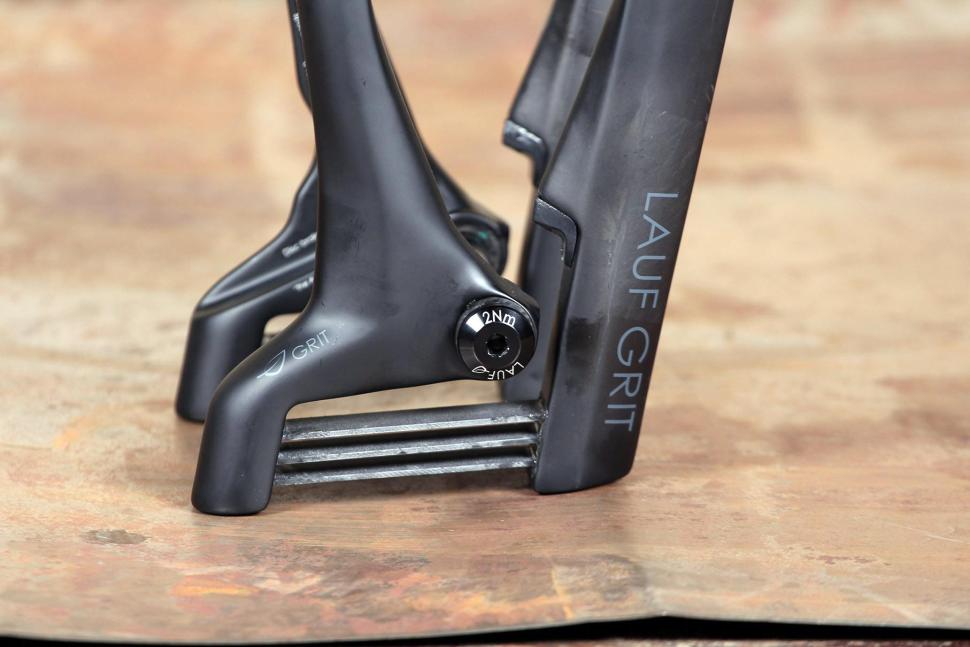
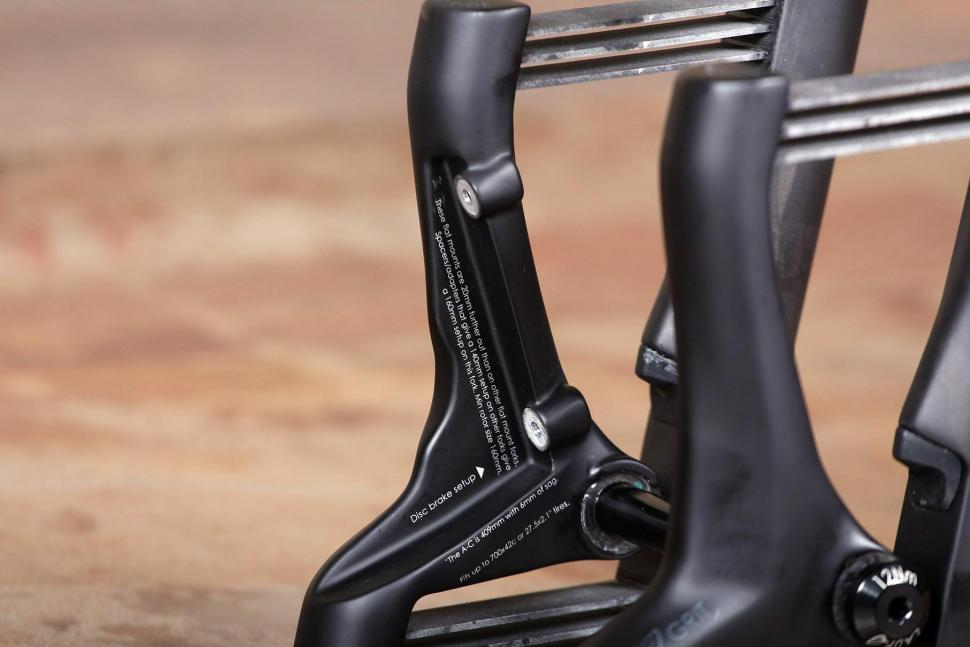
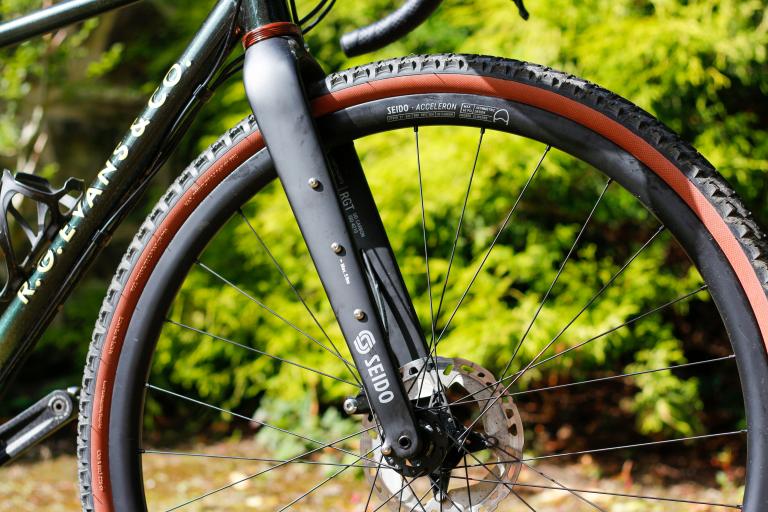
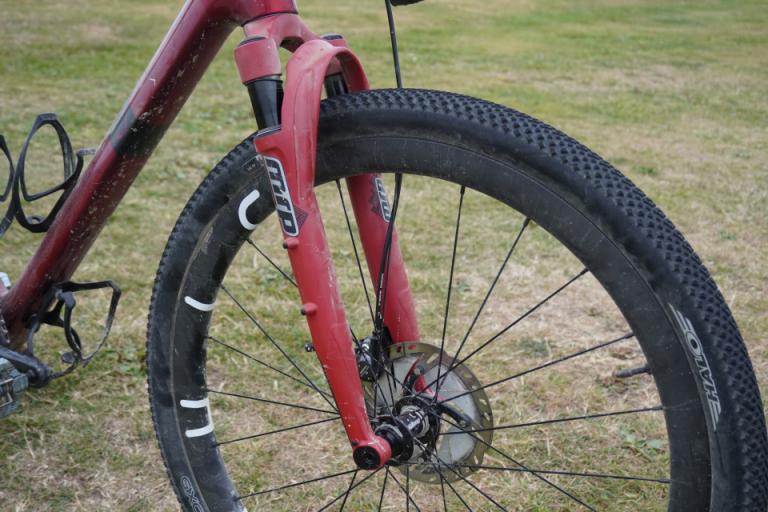
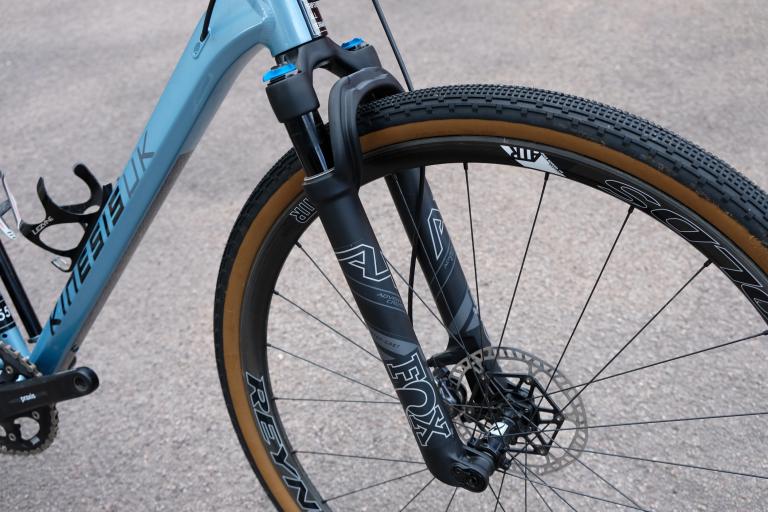
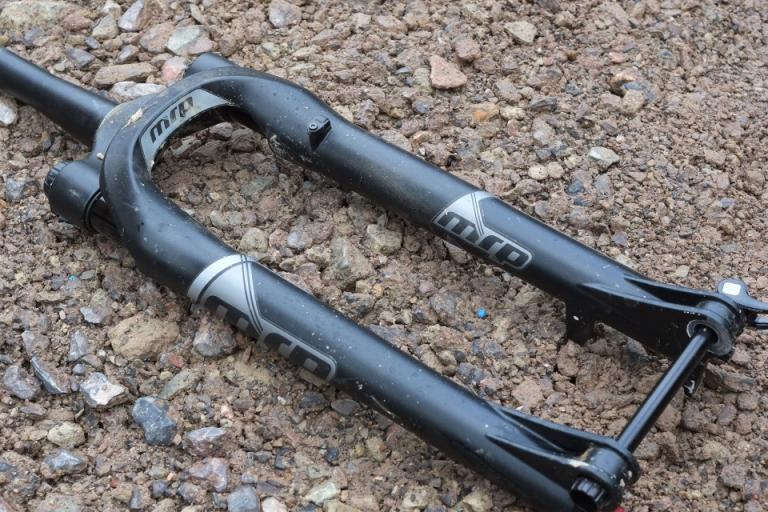
Add new comment
7 comments
Always though this is something to Lauf about...
I was fortunate, recently, to demo a Lauf fork against a Lefty Oliver on a Cannondale Slate. I paid most attention on sections of red and blue trail at Glentress, so possibly a little tougher than the intended design specification. I suspect that if I had ridden the Lauf on it's own I would have loved it but I found the (more tortionally rigid and better damped) Lefty to be far superior. The best way to describe it was that I "felt" the Lauf working but I didn't notice the Lefty at all until I had positively overwhelmed it. At the bottom of the rough trails I still had achey fingers with the Lauf although not as bad as with rigid forks, with the Lefty I was fine. I appreciate this is a bit of a moot point unless you are choosing between complete bikes and the Slate is on your list but for me it was enough to make me dismiss the Lauf and wait in hope that another manufacturer releases an after-market telescopic fork (which doesn't mess with the bike's geometry like the Fox). The Lauf is OK but the Lefty was brilliant.
It's too expensive relative to a normal fork for me to consider, but at least it is a genuinely innovate solution to a real problem. Not just putting a motor in something, or borrowing technology from another arena.
I've got a pair, I liked them but they are now in a corner of my study in favour of other forks...
I'm thinking of getting a steel frame built around them, for what it's worth the year I ran them I loved them, lighter than a SID, no faffing, no set up, no cleaning stanchions or worrying about servicing.
^^^
They generally don't pogo. The only time they actually pogo or get out of hand is when hitting a series of Braking Bumps at speed or ground that has some form of wavelength that corresponds to the bounce in the fork where you hit the crest of each wave successively harder.
If you come at them expecting them to work like a 100mm XC fork you'll be left shortchanged. If you've only ever ridden the new crops of 140mm + Trail forks you'll probably crash.
But then again the kind of rider that actually buys these forks, knows what they want and what their application will be best for.
I've always wondered about the issue with the lack of rebound on these things, especially on the MTB variants with longer travel, it must be like riding a pogo stick or a sus fork from 30 years ago.
And when for an MTB you can buy forks like the Rockshox SID why would you buy the pogo stick.
That thing looks gash.
Expensively mong.